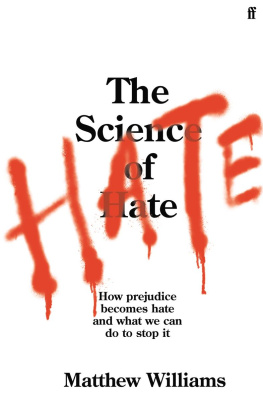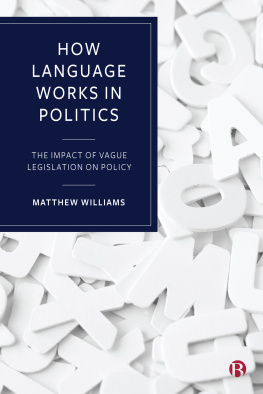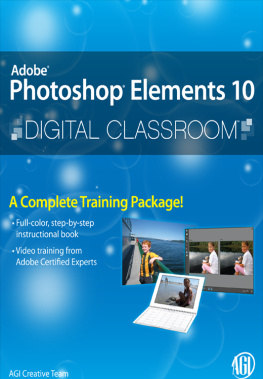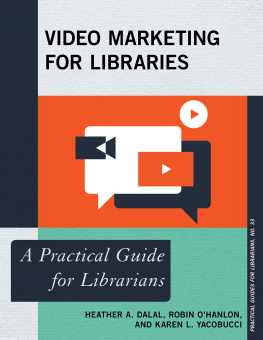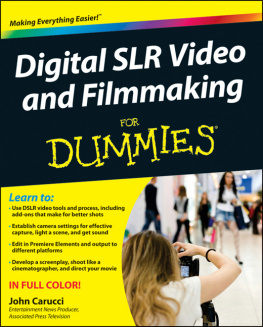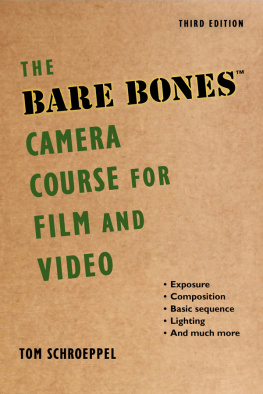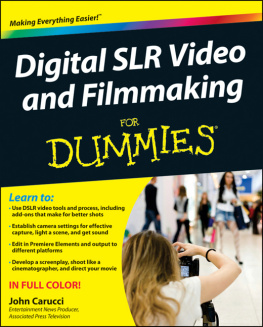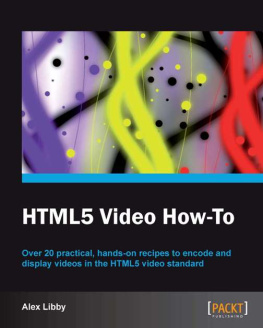
MATTHEW
WILLIAMS

DEDICATION:
To my family, who have always been loving and supportive.
To all my students who learned a thing or two.
To all the caf workers on both the Lower East Side of Manhattan and in Echo
Park who allowed me to keep a table without having to order more coffee.
To my beloved Zoe.
To Don, for making me write this book.
2006 Matthew Williams
All rights reserved. Copyright under Berne Copyright Convention, Universal Copyright Convention, and Pan-American Copyright Convention. No part of this book may be reproduced, stored in a retrieval system, or transmitted in any form, or by any means, electronic, mechanical, photocopying, recording, or otherwise, without prior permission of the publisher.
09 08 07 06 05 5 4 3 2 1
Published by Allworth Press
An imprint of Allworth Communications, Inc.
10 East 23rd Street, New York, NY 10010
Cover design by Derek Bacchus
Interior design and page composition/typography by Sharp Des ! gns, Inc.
ISBN: 1-58115-415-1
ISBN 9781581158458
Library of Congress Cataloging-in-Publication Data
Williams, Matthew, 1974
Making real life videos: great projects for the classroom and the
home / Matthew Williams.
p. cm.
Includes index.
ISBN 1-58115-415-1 (pbk.)
1. Video recordingsProduction and direction. I. Title.
PN1992.94.W495 2006
791.450232dc22
2005032255
Printed in Canada
Table of Contents
Introduction
W hen I began teaching video production at a junior high school in the South Bronx, my students were thrilled to get behind the camera and learn the different aspects of making movies and documentaries. I began the course by discussing the different types of videos and how they could tell one from the other. I focused on documentaries, or, as my students like to call them, real-life videos. I showed my class examples of various television documentaries, like Cops, Behind the Music, Endangered Species, and Unsolved Mysteries.I also showed them theatrically released documentaries like Hoop Dreams, 4 Little Girls, Straight, No Chaser, and Style Wars.
For each documentary, we discussed how the film had been madethe planning, filming, and assembling of the video. My students related the process of making a documentary to that of writing a report. Like reports, most documentaries require research and planning. Documentaries can inform, persuade, and/or instruct the audience about a topic. One cannot just begin writing a report and finish it in a couple of hours. Likewise, an hour-long documentary does not take an hour to make. We discussed the research process and how important it is to conduct good research to help build your documentary or report.
While teaching my students about the documentary, I couldnt believe how knowledgeable they were. They identified the sources for all the examples of television documentaries. In fact, they knew more about them than I did. They loved talking about other episodes of Cops and Behind the Music. Oh, did you see the one with P. Diddy? He was already making money when he was a kid. My students would get into heated conversations about famous peoples biographies or who was innocent or guilty in documentaries about unsolved mysteries.
With all their knowledge of television documentaries, I was surprised by how little they knew about the process of making a video. Im not only talking about documentaries, but any type of video. To most of my students, watching television was like looking out the window and watching something happen. They couldnt decipher the TV world from reality. I decided that before they began making their own videos, I had to give them a quick lesson on how movies and television worka.k.a. media literacy. I later incorporated media literacy into discussions about video production, because one is useless without the other. That is why this book begins with a bit of film history and an explanation of how the motion picture works.
The class then went on to make their own documentaries. I kept a record of the work that went into the creation of my students videos. I knew that I was doing something new and innovative in the classroomusing documentary making as a tool for providing a fundamental education. My students used the Internet for research and learned how to organize, keep records, and process information, all while putting together a video. As we watched examples of documentaries in the beginning of class, they began to understand the process: that to make even a short documentary, a lot of research, writing, video collecting and recording, and editing would need to take place.
What Does This Book Contain?
Making a video can be an education in its own right, but the process that I implemented for my students was one that accentuated its learning value. This book shows you how to make documentaries the way my students made them. It discusses a step-by-step process for making a film where you document each step of the process. By doing this, you will be able to deconstruct and understand the entire process of making a documentary. Each step of the way, a filmmaker must make hundreds of decisions:
What questions should I ask this subject?
Why is this photograph a better representation of what I want to express in my film?
Where should I put the camera to establish the setting or location?
How can I emphasize a scary moment during this part of the documentary?
When should I show the title of the documentary?
A good filmmaker will ask herself questions throughout the process, reexamining the content of the film in order to make it better. The process of making a documentary thus guides the filmmaker through an enriching learning experience.
The process encourages the student to think critically about her Aim. Students will develop proficiency in visual communication, which involves a gamut of skills taught in the normal school classeslanguage arts, social studies, science, math, and technology. However, this book wont show you how to use video literacy as a substitute for English or any other class.
Learning about the process of making documentaries is a first step to becoming media literate, an essential tool in our society. Todays youth (and the rest of society) are continually confronted by different forms of media. It is important for kids to know how that media is constructed and be able to examine the decisions filmmakers make when assembling the videos shown on television. The process is not an objective, scientific one. Each video that is shown (from commercials to news programs) contains implicit and/or explicit information that presents a point of view. As students learn to recognize the decision making that comes into play while constructing their own videos, they can begin to observe the intentions and points of view of the videos presented on television.
This book is divided into five units. The first unit deals with the concept of video, explaining the different genres and the relationship between documentaries and other videos. It describes how the line that divides one video from another has become blurred. Some videos contain elements of others.
The second unit of this book dissects the format of the documentary by looking at how it is organized into parts. This section focuses on identifying the parts or components of the documentary and explains how to research, write, and create these components. The section uses examples from some of my students videos.
Next page

